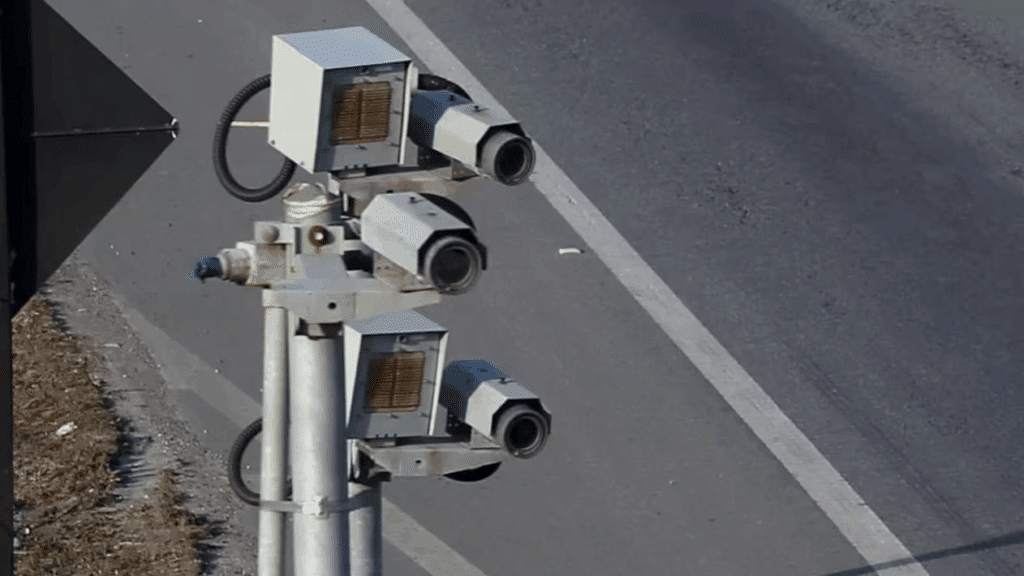Anúncios
Speed cameras are everywhere in Brazil, and while they play an essential role in promoting road safety, they can sometimes feel like an unavoidable trap for drivers.
Would you like to know tricks to escape the radar?
See how
Navigating through the country’s roads without falling into the clutches of fines requires more than just luck—it demands knowledge and strategy. Understanding how these systems work and adopting safe, legal habits can make all the difference.
Anúncios
This guide dives deep into the world of speed cameras, revealing seven expert-backed strategies to help you avoid unnecessary tickets while staying within the boundaries of the law.
From recognizing camera hotspots to understanding speed limits and leveraging technology, these practical tips are designed to enhance your driving experience and keep your record clean.
Anúncios
Whether you’re a daily commuter or planning a road trip, this comprehensive breakdown will empower you to drive smarter, safer, and with peace of mind.
Read on to discover the secrets behind avoiding fines and how you can apply these techniques on Brazil’s roads today.
Understanding How Speed Cameras Work in Brazil
Speed cameras, or radares de velocidade, are an integral part of Brazil’s traffic monitoring system. They serve a dual purpose: ensuring road safety and enforcing speed limits. These devices are strategically installed in urban areas, highways, and even near pedestrian crossings to catch drivers exceeding speed limits. To outsmart them, you first need to understand how they function.
Fixed Speed Cameras
Fixed cameras are mounted in specific locations, such as highways or high-traffic zones. These cameras continuously monitor vehicles passing by. Equipped with advanced sensors and cameras, they measure the speed of each vehicle using radar or laser technology. Once a vehicle exceeds the speed limit, the system captures an image of the license plate and generates a fine.
Interestingly, Brazilian law requires that these cameras be signposted at least 300 meters in advance. This means you’ll see warning signs before approaching a fixed speed camera, giving you time to adjust your speed.
Mobile Speed Cameras
Unlike fixed cameras, mobile speed cameras can be moved to different locations. Often used by law enforcement officers, these devices are mounted on tripods or patrol cars. They are particularly tricky because their placement is unpredictable. Unlike fixed cameras, you won’t always find a warning sign indicating their presence. This makes it crucial to adopt safe driving habits everywhere, not just near known camera locations.
Average Speed Cameras
A relatively newer system in Brazil is the average speed camera, also known as controle de velocidade média. Instead of monitoring your speed at a single point, this system calculates your average speed over a stretch of road. This means you can’t simply slow down momentarily as you approach a camera. To avoid a fine, you must maintain a consistent speed below the limit throughout the monitored area.
Why Speed Limits Are Strictly Enforced
Before diving into ways to drive smarter, it’s essential to understand why speed limits exist and why they are so rigorously enforced in Brazil. Speeding is one of the leading causes of road accidents and fatalities in the country. By adhering to speed limits, you’re not just avoiding fines but also contributing to overall road safety.
Accident Reduction
Studies show a direct correlation between reduced speeds and fewer accidents. Speed limits are carefully calculated based on road conditions, traffic flow, and pedestrian activity. For instance, a lower speed limit in urban areas minimizes the risk of collisions with pedestrians or cyclists, who are more vulnerable on the roads. By following these limits, you help prevent accidents and save lives.
Environmental Benefits
Driving at a consistent and reasonable speed is also better for the environment. Sudden acceleration and high speeds increase fuel consumption, leading to higher emissions. By sticking to speed limits, you reduce your carbon footprint and contribute to a cleaner environment.
Legal and Financial Implications
Brazil’s traffic laws impose hefty fines for speeding violations, and repeated offenses can lead to the suspension of your driver’s license. Moreover, some violations come with additional penalties, such as increased car insurance premiums. Driving within the speed limits saves you from these legal and financial headaches.
7 Expert Tricks for Safe and Legal Driving
Now that you understand how speed cameras work and why speed limits are crucial, let’s delve into seven expert strategies to avoid fines while staying safe and legal on the road. These tips are not about evading the law but about adopting better driving habits.
1. Use GPS Applications with Speed Camera Alerts
Many modern GPS apps, such as Waze and Google Maps, provide real-time alerts about speed cameras. These apps rely on user reports to update their databases, helping you stay informed about fixed and mobile cameras in your vicinity. Keep your app updated to benefit from the latest information.
2. Always Observe Traffic Signs
Brazilian law mandates clear signage for speed limits and fixed speed cameras. Make it a habit to scan the road for these signs, especially in unfamiliar areas. They not only inform you of the speed limit but also warn you about upcoming cameras, giving you time to adjust your speed.
3. Maintain a Safe Following Distance
Keeping a safe distance from the vehicle ahead ensures you have enough reaction time in case of sudden braking. It also discourages tailgating, a behavior that often leads to speeding to close gaps. A good rule of thumb is to maintain a three-second gap between your car and the one in front.
4. Use Cruise Control on Highways
Most modern vehicles come equipped with cruise control, a feature that helps you maintain a steady speed. This is especially useful on highways, where speed limits are higher, and the temptation to speed is greater. Set your cruise control to the speed limit and let the system handle the rest.
5. Monitor Your Speed Regularly
It’s easy to lose track of your speed, especially on open roads. Make it a habit to glance at your speedometer regularly. This simple practice keeps you aware of your speed and helps you adjust as needed.
6. Plan Your Routes in Advance
Planning your route reduces the chances of rushing to your destination. When you’re not in a hurry, you’re less likely to speed. Use navigation apps to estimate travel times and choose routes with fewer speed cameras or traffic congestion.
7. Stay Calm and Patient
Impatience often leads to aggressive driving and speeding. Practice mindfulness while driving and remind yourself that arriving safely is more important than arriving quickly. Staying calm reduces stress and helps you focus on the road.
How Weather and Road Conditions Affect Speed Limits
Another crucial aspect of safe driving is understanding how weather and road conditions influence speed limits. In Brazil, the law allows for speed adjustments based on these factors, even if they aren’t explicitly stated on traffic signs.
Driving in Rainy Conditions
Rain significantly affects road traction, making it harder to stop or maneuver your vehicle. Even if the posted speed limit is 100 km/h, driving at such speeds during heavy rain is unsafe. Reduce your speed and increase the distance between your car and the vehicle ahead to avoid accidents.
Navigating Curves and Slopes
Curves and slopes require extra caution. Speeding through a curve can cause your vehicle to skid, especially if the road is wet or poorly maintained. Pay attention to warning signs and reduce your speed accordingly to maintain control of your vehicle.
Nighttime Driving
Reduced visibility at night makes it harder to judge distances and spot obstacles. While speed limits remain the same, it’s wise to drive slower than usual in poorly lit areas. Use your headlights properly and stay vigilant to ensure a safe journey.
Staying Informed About Traffic Laws
Traffic laws in Brazil are periodically updated, and staying informed can save you from unintentional violations. Regularly check the official website of Brazil’s National Traffic Department (DENATRAN) for updates on speed limits, traffic fines, and other regulations.
Participate in Defensive Driving Courses
Defensive driving courses teach valuable skills, such as hazard recognition and accident prevention. These courses also provide insights into traffic laws and safe driving practices, making you a more responsible driver.
Join Driver Communities
Online forums and social media groups for drivers in Brazil are excellent resources for staying informed. Members often share real-time updates about speed camera locations, traffic conditions, and changes in traffic laws.
Keep Your Vehicle in Top Condition
A well-maintained vehicle is essential for safe driving. Regularly check your brakes, tires, and lights to ensure they are in good working condition. A properly functioning car helps you adhere to speed limits and avoid accidents.

Conclusion
In conclusion, mastering the art of safe and legal driving in Brazil goes beyond merely avoiding fines; it’s about embracing responsible habits that enhance road safety for everyone. By understanding how speed cameras operate—be it fixed, mobile, or average speed systems—you can anticipate their presence and adjust your driving accordingly.
This knowledge, combined with the expert tips shared in this guide, empowers you to navigate Brazilian roads with confidence and compliance.
From leveraging GPS apps for real-time speed camera alerts to practicing defensive driving techniques, every strategy outlined here underscores the importance of foresight and mindfulness behind the wheel.
Remember, adhering to speed limits not only saves you from hefty fines and legal troubles but also significantly reduces the risk of accidents and contributes to environmental sustainability.
As traffic laws in Brazil continue to evolve, staying informed through official sources, driver communities, and training courses is vital. Together with regular vehicle maintenance, these efforts ensure you remain a conscientious and law-abiding driver.
Ultimately, safe driving isn’t just about reaching your destination; it’s about ensuring that everyone shares the road responsibly. So, embrace these practices and make every journey not only ticket-free but also safer and more enjoyable for all.
Drive safe, stay informed, and contribute to a better driving culture in Brazil.



